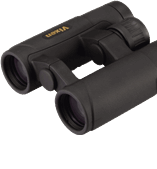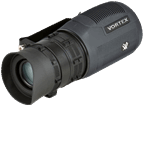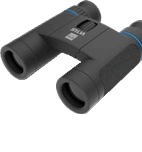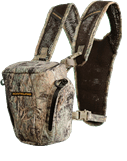Tourist binoculars and pocket binoculars are often smaller so that they do not take up much space and, above all, do not weigh much. You will often come across monocular variants, but they are not suitable due to the loss of spatial perception.
Who among you regularly takes binoculars with you on trips to the forest? If we could count it, we would probably find that very few of us. At the same time, such a telescope can be very useful. Yes, you can use it to observe horizons, wildlife and amazing natural nooks and crannies and other such activities.
In certain directions, however, binoculars can get you out of trouble or shorten your journey by quite a few kilometers. By simply observing the path and estimating the terrain, you can really help yourself thanks to the binoculars. But how to choose such binoculars for the forest and for the backpack?
Why should telescope be binocular for both the forest and the backpack?
Let's face it, the main problem why people don't carry binoculars with them will surely be its weight and the fact that they are convinced they can "survive" without it. Yes, they will get around, but it's good to have it. Just like a compass or a flashlight or even a reliable knife.
The weight of the telescope is directly related to the construction of the telescope. You can have a plastic monocular that will weigh only 100 grams. Perhaps it is better not to have such a telescope, resp. it si good only for emergency use. Monoculars do not provide good spatial perception due to the use of only one eye.
Therefore, binoculars, so-called two-eyed, are generally recommended for nature. Unfortunately, you have not yet won by choosing binoculars and you still have a long way to go for information and a quality product / experience before you are ready to make a good choice. So, for example - the construction of binoculars.
How do binoculars differ by type?
Telescopes could be further divided into spotting scopes and so-called binoculars. Binoculars are much smaller than spotting scopes. Prismatic optical prisms are used in their construction, thanks to which the length of the telescope can be dramatically reduced.
However, the big minus of such a construction is its weight. By themselves, the prisms are so heavy that even a small telescope can weigh more than its larger telescope counterpart. Another disadvantage is the loss of light, when up to 1/3 of it can disappear in the prism.
Such losses are very undesirable for observation in the dark or against the forest. The choice of a specific type of binoculars therefore depends very much on your personal preferences. Although it is bigger, it will provide better brightness. But what about other features?
Why do forest and backpack binoculars have to have a smaller zoom?
If we talk now about zooming of the telescope, we will reach the magic limit of eight to ten times at most. This is where its sustainability breaks down in bare hands. In general, more than eight to ten times magnification is difficult to sustain. Conversely, the greater the zoom, the more the binoculars can help you and the better you will be able to observe individual animals.
But what about human resting tremor? This can be prevented by simply resting the telescope on your knees when kneeling, as well as on a backpack, tree or rock, or it can also be put on a tripod. There are no problems with that, but you will notice another snag at the moment of choosing the diameter of the lens. Here again, the larger the diameter of the lens, the better the binoculars' brightness. Yes, but that also logically makes it heavier and bigger.
Despite this, we dare to say that for the purpose of hiking and occasionally admiring the landscape, a diameter of around 23-35 millimeters is more than enough for you. And where do you find these numbers? In binocular markings - 7x50, 10x35 and so on - the first number is the magnification, the second the diameter of the lense.
There is still a lot to consider about travel and pocket binoculars…
Of course, the issue is much broader, but these few pieces of information will be enough for you to start with. We would also like to note that the construction of the telescope, in this case the material, should always be made of light metals or steel. Lenses should be glass. Plastic is not a suitable material for telescope optics.
When choosing, also note the specific glare on the lenses. It's a sign of anti-reflective treatment that any decent binocular should have. Thanks to it, you will be able to enjoy a clear and sharp image. Last but not least, waterproofing, protective lens caps and a neck strap are important.
With this information, you are already able to purchase a quality pair of binoculars for your pocket and backpack, which you will not regret and which will be your reliable friend for life.

MFH® universal binoculars / 10×50
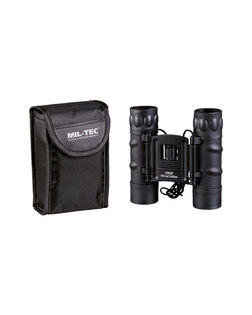


Mil‑Tec® GEN.II universal binoculars / 10×25

MFH® universal binoculars / 20×50



Mil‑Tec® monocular / 10×25
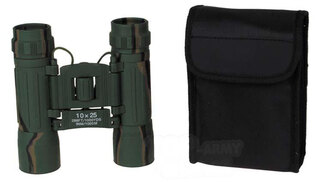


MFH® Universal 10x 25 binoculars
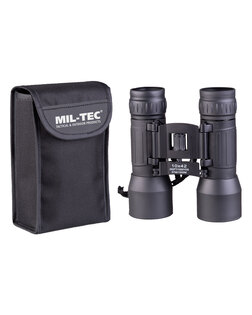
Universal binocular 10x 42 Mil‑Tec®
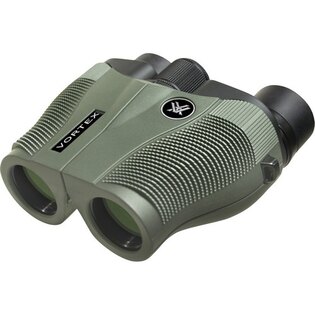
Vortex® Vanquish binoculars / 10×26






































































































































